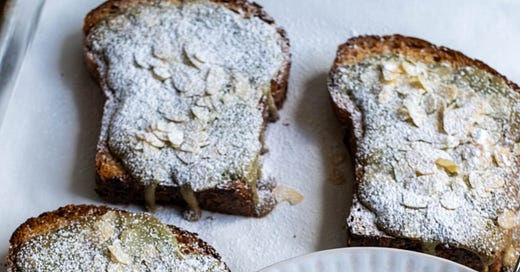Hello, and welcome to Newsletter No 34 here on Substack! Thank you for stopping by. If you are already subscribed - THANK YOU! Seeing thousands of you read my newsletters each month means the world to me! And if you are not yet a subscriber, hit the link below if you are interested in recipes as well as tips and tricks to make the most of our increasingly eclectic pantries and a good dose of my at times random musings about all things food!
❤️ Did you know that if you hit the HEART at the top or bottom of this post, it makes it easier for people to find this newsletter? (And also puts huge smile on my face!)
One of my go-to bakeries in Brussels (Goods) recently started selling their Fig Leaf Almond Croissants (see below) again which is all I needed to know that fig leaf season has officially begun and to hightail it there the moment I could to get myself one of my all-time favourite pastries. The only issue is that said bakery is only open Thursday through Sunday and onl…
Keep reading with a 7-day free trial
Subscribe to Real Simple Food to keep reading this post and get 7 days of free access to the full post archives.




